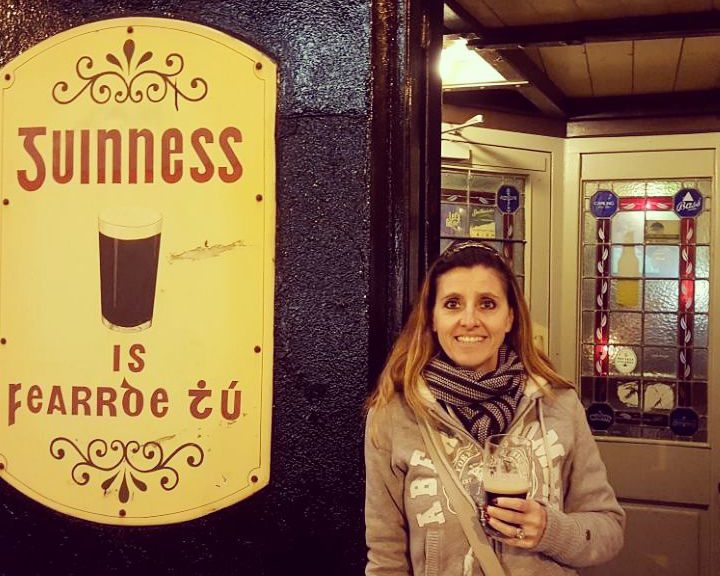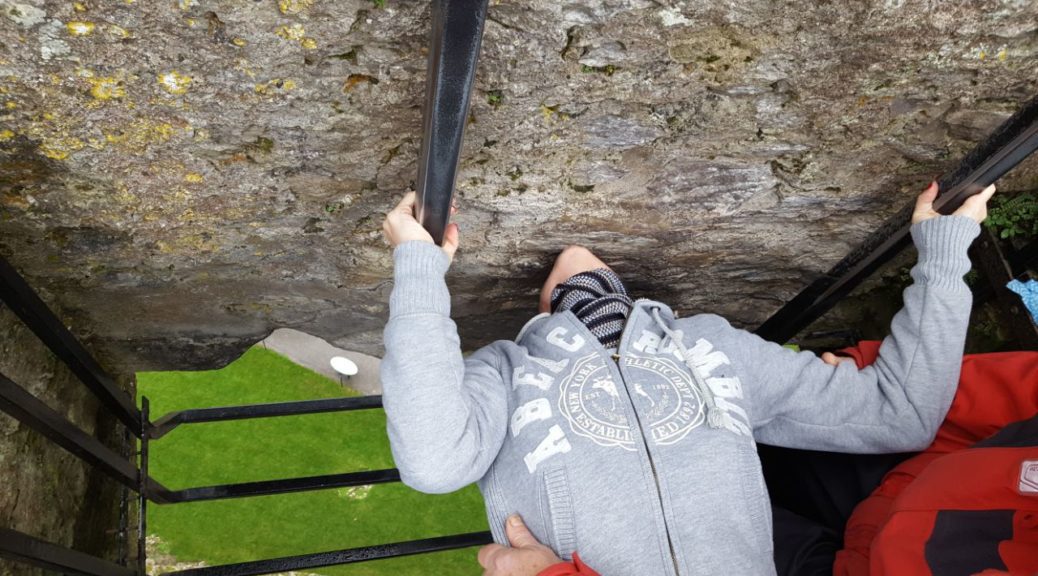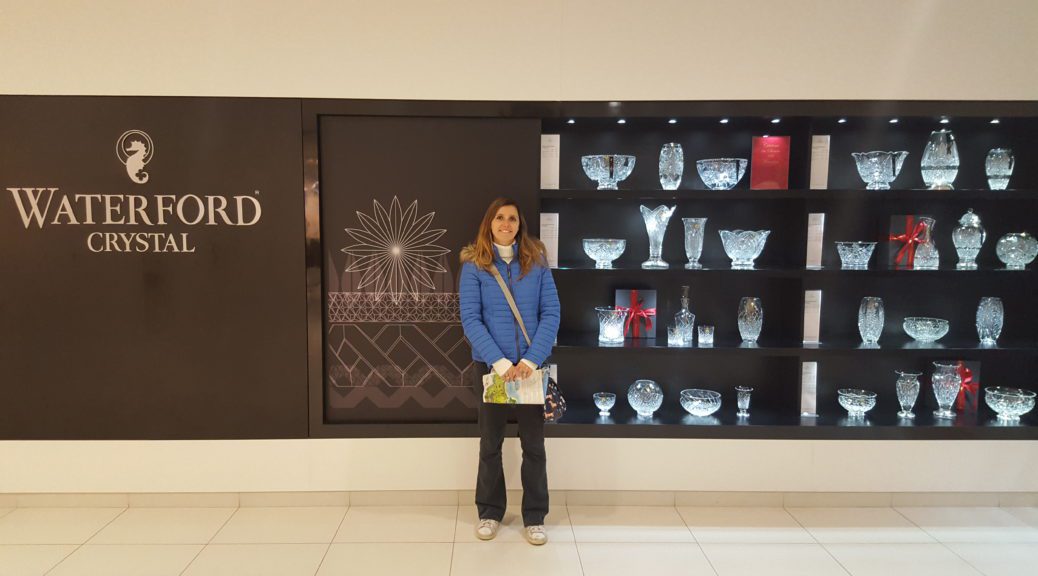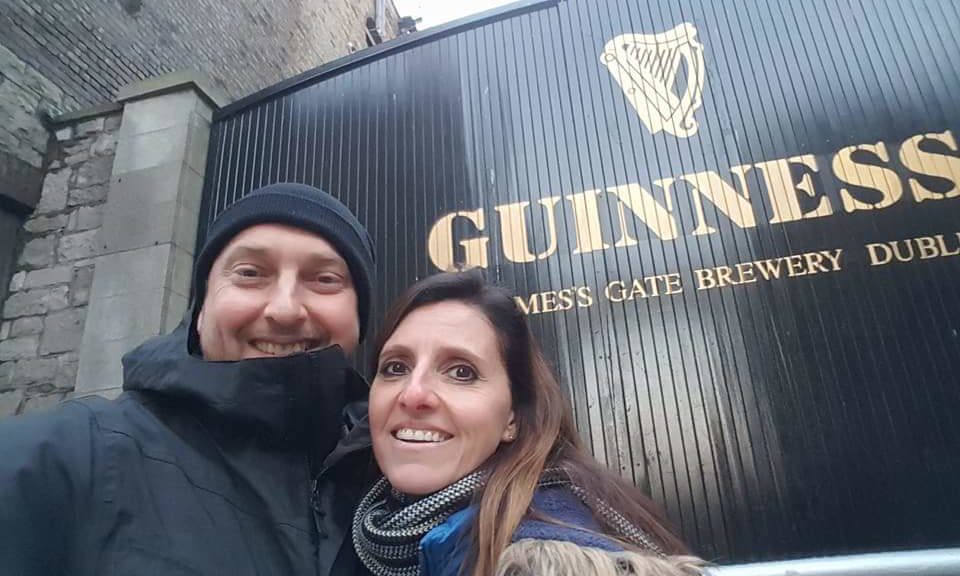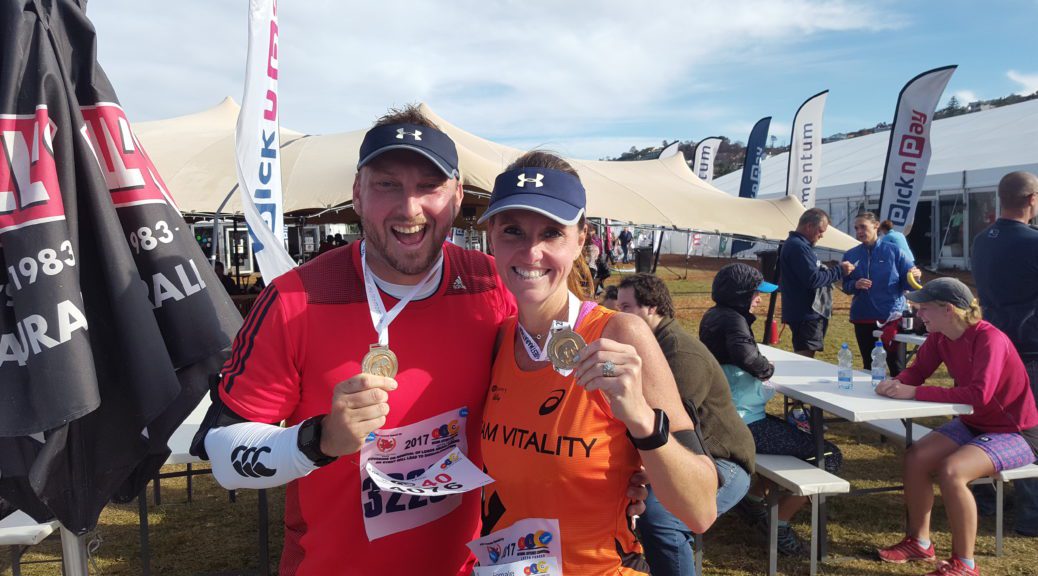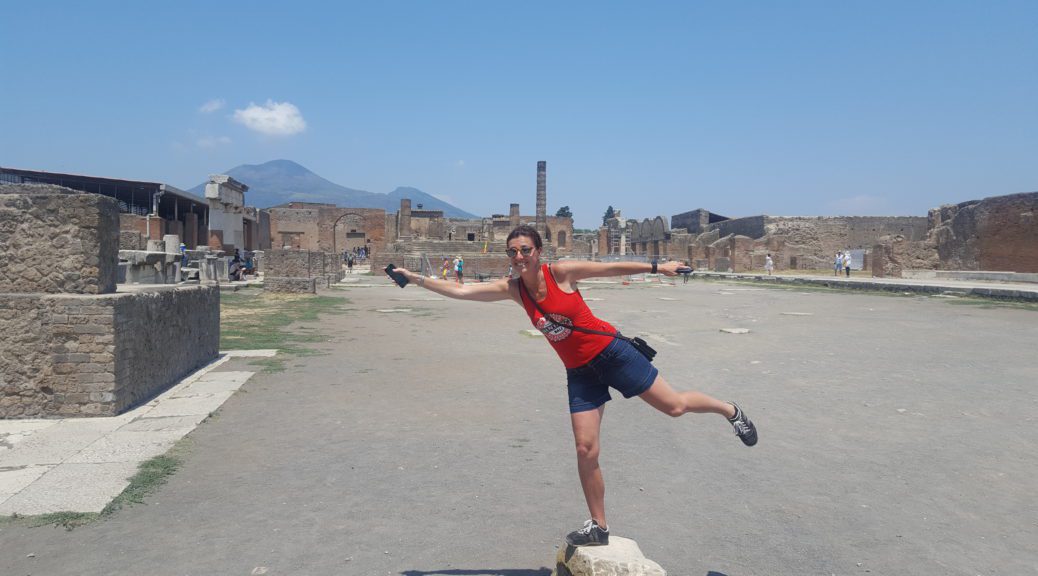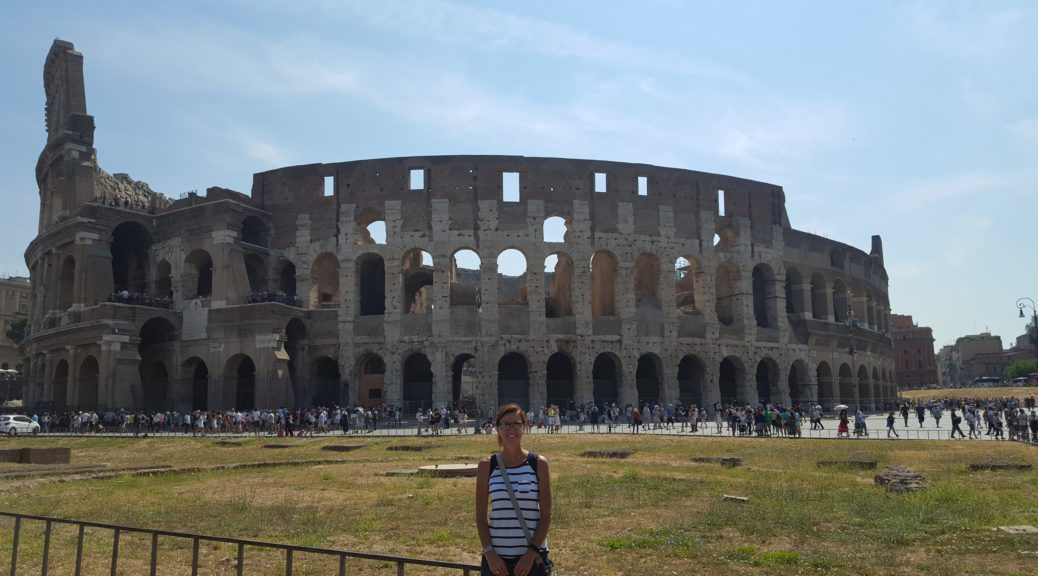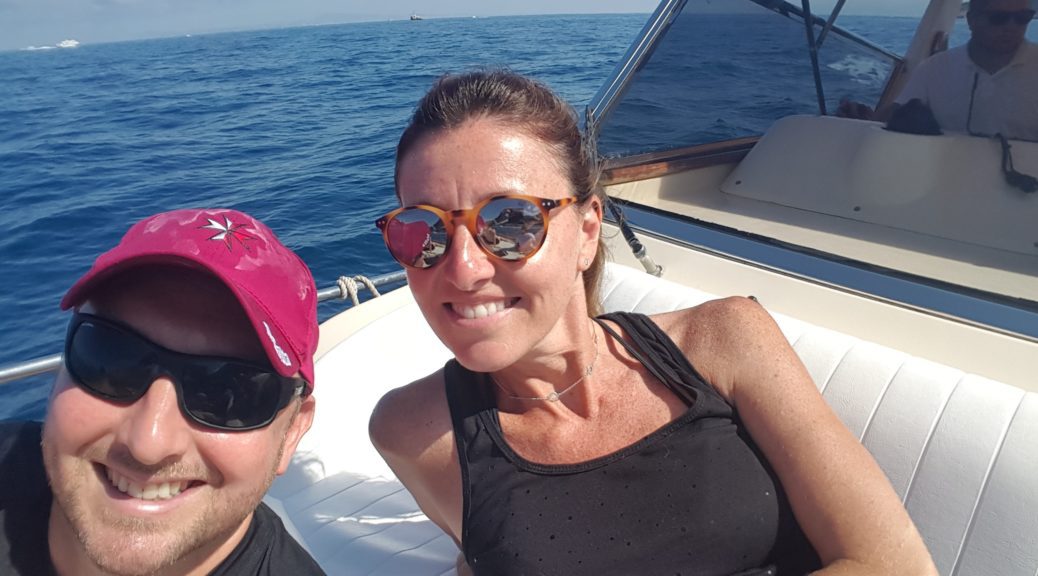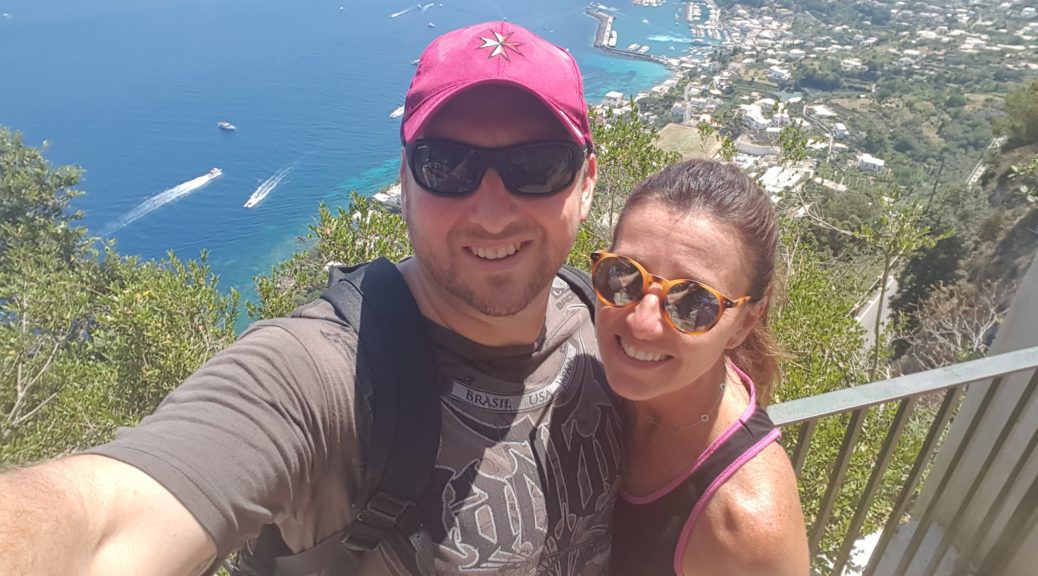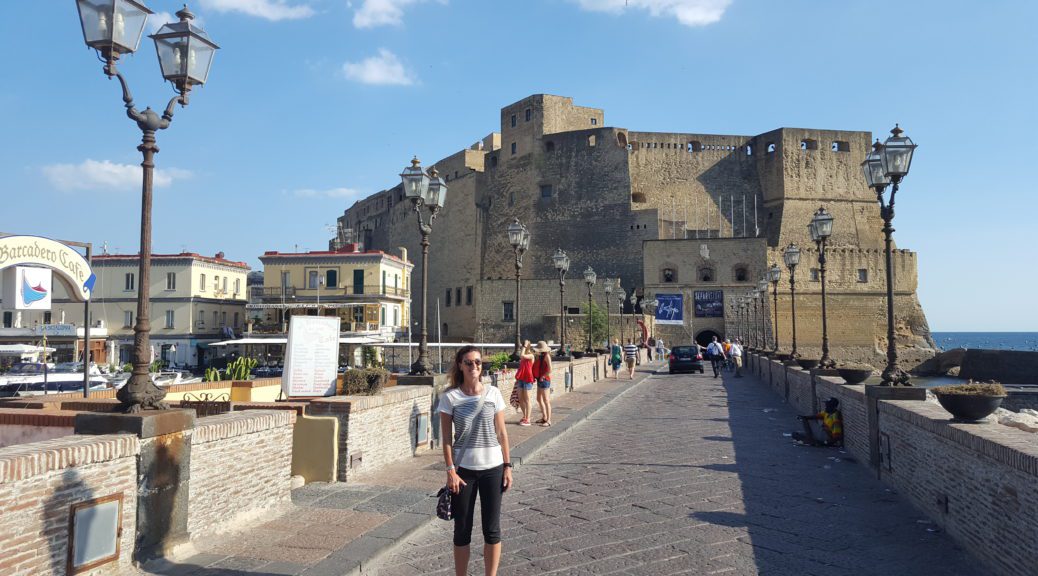KNYSNA
13 – 17 July 2017
Based on a New Year’s resolution to get fit(ter) in 2017, we succumbed to entering the Knysna Half-Marathon that our friends had been trying to get us to enter for years, unsuccessfully.
It seemed like July was lifetimes away and there would be plenty time to train… But you know what they say about time when you’re having fun. It’s not training, it’s flying.
We had planned ahead with the flight though and had Vitality Flight Booster in place to get us from Jozi to George for a long weekend in Knysna to balance the running bit with a lekker experience on the loveliest coast in South Africa (in our opinions).
Half day’s leave aside, it was the usual frenzied depart from the Big Smoke and we both banged away madly on laptops on the flight down. A worthwhile exercise such that we could arrive with ducks in neat rows, to join our friends Tim and Wendy who’d be our partners in crime and who had flown down earlier than us.
They had caught a taxi to Oubaai Spa and Resort and made a mini-break of the few hours our later arrival afforded. They’d brunched and had a massage and by the time we arrived were nestled in the bar lounge with their own very comfy couches and fireplace that they’d made the setting for their card games. With their Bluetooth speaker and not another customer in sight, they were not only told to make themselves at home, they were the atmosphere.
All excited to be on holiday, we shared a welcome drink and a catch-up on our quick and painless transfers and then headed for the car – a very fancy free-upgrade Mercedes – to make our way to our actual destination for the weekend, Knysna.
We’d booked better than our usual, thanks to the Vitality travel benefits and found our digs to be very lush; a double storey cottage in the very lovely Belvidere Manor lodge, on the edge of Knysna. With bedrooms on both floors, we found ourselves with private suites as well as a cosy communal lounge (complete with fireplace) and kitchen/dining room.
Giddy at our good fortune, we moved to The Bell – dubbed “The smallest pub in Knysna” and the deal-sealer on our choice of accommodation.
With the outer appearance of an old-school barn, in black and white with a big wooden door in a low doorway that Christian had to bend through to avoid hitting his head, and its 10 or so tables in the inviting low yellow glow, The Bell was perfect for our welcome dinner. AND it served the local craft brew, Forresters, on tap!
With a formidable menu of pub grub favourites, we ploughed our way through bangers & mash, fish & chips and a chicken and mushroom pie that was to die for. So far Belvidere Manor was shaping up to be our kind of place!
FRIDAY
Friday morning began with the included breakfast; a tasty buffet of fresh baked goods, cold meats, preserves and cheeses, and scrambles and bacon for good measure. We were allocated what we considered to be the best table in the house, a round wrought-iron table in the corner of the wrap-around verandah that hugged the house, with the rolling lawns that infinitied into the view of where the clear blue skies met the sea beyond.
We lingered over breakfast, loosely planning our day but mostly enjoying the morning sun, so strong enough in winter to cut through the chill of the morning but moderate enough to allow for proper basking.
Our first and only mandatory task for the day was collecting our race numbers for the next day’s Marathon. The registration set-up was in a marquee in the same grounds as the Knysna Oyster Fest grounds, so there was already quite a bit of activity with participants of both making their way onto the field.
The process was very well organised and it was only a few minutes later that we were on our merry way with our goody bags in hand.
The stands in the registration hall were all sports related, pedalling all sorts of sportswear, accessories and paraphernalia. It was scary how expensive everything was for a sport that technically required no equipment. This certainly wasn’t looking like an event where you just pop on some trainers and hit the road!
The boys took part in one of the interactives, where you had to pedal as fast as you can for a minute and they rewarded you for calories burned with the equivalent amount of Smart Shopper points. Wendy and I shopped (and bought nothing).
With our admin done, we made our way down to the Knysna Waterfront to have a coffee in the upstairs restaurant that afforded us the best views through the floor-to-ceiling windows, but out of the icy light wind.
It was really good to have a Friday to ourselves to relax and watch the day go by. With the race the next day, we intended to take everything at a leisurely pace, so planned to stock up on snacks and head back to enjoy the fireplace in our cottage with an afternoon of cards and laughs.
We’d seen signs for the Knysna Superspar so headed off in that general direction. Walking a few blocks in and having no new clues as to its whereabouts, we asked a couple of car guards for directions. Their “you can’t miss it” style directions were an oversell and despite our best efforts, we seemed to criss-cross the better part of the whole of town… And ended up at Checkers!
We do love a new card game and were grateful to have an afternoon of tutorial and practice for this cool new game Tim and Wendy taught us that was clearly designed with drinking penalties in mind! With a cosy fire and easy company, we had a fun and relaxed fritter into the evening.
Dinner had been predetermined as Chatters pizza parlour, based on the delicious aromas that had wafted from the restaurant as we passed on our hunt for the Superspar (whose superhero ability must certainly be invisibility, from our experience).
We arrived at Chatters just before 18h00, amped for an early dinner to suit our early night aspirations. Chatters was already busy and were fully booked for a double sitting. Not taking ‘No’ for an answer, we tested a new technique and just hovered until someone (else) made a plan… Which saw us sitting at a garden table and eating fresh pizzas 20 minutes later, washing it down with a single glass of red to balance celebrating the good life with good sense of the impending morning ahead of us.
Returning home we thought we’d prep ourselves for the morning and then resume position playing cards, not realising how much admin goes into race prep! Besides the usual stuff like pinning numbers to shirts and whatnot, this race had some sophistications like electronic timing tags that had to be attached to shoelaces, conveniences like a togbag service that required ID tagging, and of course situational circumstances that needed a whole bunch of pre-planning.
The Knysna race starts at the top of a mountain so we needed to catch a taxi to the park-and-ride shuttle meeting point (and there’s no Uber in Knysna so it was a prearrangement that had to be made at hotel reception with a local driver); the shuttle required a tag that was included in the race pack. Once at the top of the mountain there was an inevitable wait while the 8500 participants all were shuttled up to the start so we needed to be warm.
The organisers had advised that they would be collecting discarded clothing and blankets to be donated to the poor and those affected by the terribly Knysna fires that had ravaged the town only weeks before leaving countless people homeless. This meant that we didn’t have to ration clothing on the day, having to carry whatever we wore through the whole race. It was a blessing and a curse and resulted in a veritable tower of clothing that I intended to layer myself in – a bold combination of colours that possibly even the homeless may baulk at!
By the time we were done it was bedtime. A great call to turn in early – a good night’s sleep is invaluable when it comes to anything taxing, especially something tasking the mind as heavily as it was bound to task the body. I was still VERY intimidated at the thought of running 21km in a row!
SATURDAY
But the morning came and our prep paid off. The taxi was waiting at 06h00, as arranged. The shuttle was an incredibly well-oiled machine. And we had no more than a half hour to hover and worry and not get toooo cold (although I couldn’t feel my toes, they were so numb).
Soon we were huddled at the start, counting down to the gun going off… And we were away.
Well, not immediately away. It takes quite some time for that many people to even get to the start line and it was a good 5 minutes before we were even on the official track, taking the first official step of oh-so many.
As always, the first kilometre was slow and clumsy while the pack sorted itself out. And again we wondered why people who fully intend on walking the race still jostle to get to the front for the start.
The first few kilometres were uphill but we were pleasantly surprised as we’d prepared for quite a climb based on the anecdotal accounts we’d been given from friends who’d successfully completed the course in previous years.
It was still good relief when the course plateaued – and another relief when the several kilometres of downhill were not as death-defying as they’d been painted to be.
The hardest part was actually the last couple of kilometres as the course joined the seafront promenade. After all the ups and downs, running on flat ground was a lot harder than it should be. Most likely because of the 20 odd kilometres that had been put onto my wildly unprepared legs already. Running out of juice, I even had to walk a bit in the home strait, able to see the Finish line; so close but yet so far away!
We did remarkably for our first attempt; I came in on 2 hours and Christian 10 or so minutes after me. We’d set our sights on somewhere around the 2h15 to 2h20 mark and had thought that to be optimistic as Half-Marathon virgins! Of course, we didn’t hold a candle to Tim’s ridiculously fast 1h48 finish! … But that just meant he had time to get the beers in while he waited for us!
Conveniently, the Finish line for the race was into the Oyster Fest ground so it was an easy sell to have a lovely long sit and sample all the Forresters craft beers that were flowing freely. The weather had truly been kind to us on this winter’s morning and even though it was chilly with a persistent icy breeze, the sun was still smiling on us – and it could have been a LOT worse on a coast that’s known for being Cold And Wet.
Lunch soon became a concern – hardly surprisingly only with a few bananas on board and almost 1500 calories burned! – but the queues were too long as the Festival stalls to make them viable for standing on weary legs, so we decided to see what the town had on offer.
Exiting the grounds, we lucked upon a bank of taxis sponsored by Europcar that were shuttling guests to local places of interest. We jumped in the Thesen Island one, which left immediately almost as if on command and with us as the only passengers so we felt quite swish.
We were going to hit the Forresters brewery for lunch, but it proved to be as elusive as a Superspar… Which worked out to our favour as we found ourselves on the doorstep of Freshline Fisheries, a name I’d seen featured highly on TripAdvisor and which perfectly fitted my proposed brief for lunch: the finest fish n chips in Knysna.
At that it was. What a fabulous lunch!
Snoek cakes, battered hake, deep-fried calamari, grilled gurnard, Thai prawn curry, fat finger crispy chips. We mowed through the lot! With insult to injury being that the place isn’t licensed so the boys ended up having to hunt down Forresters brewery anyway to get takeaways to accompany lunch!
Fed and happy, we phoned our taximan from the morning to come and fetch us and were amused that he’d upgraded us from the morning’s Camry to a Mercedes – he must’ve heard about how well we’d run!
He took us home where we welcomed a long shower and slathered lotions and potions on our tired muscles to try stave off some of the impending pain that inevitably comes with such a test of endurance as we’d put ourselves through.
The sun was out and our patio sheltered from the rain so we were able to relax and bask in the sun and in the afterglow of our achievements.
All too soon it was the time that every Saturday brings. Rugbytime.
The boys had decided it was an event most suited to The Bell so at 16h30 we made our way down to get settled for the 5pm Lions vs Sharks game. We weren’t the only ones with that idea of course and our little pub was packed, bar one little table for 4 that suited us nicely, thank you!
We settled in and had dinner there as well before grabbing a take-out bottle of wine to resume our positions in front of our fireplace with a new card game to try, called Exploding Kittens, which was probably only marginally more dramatic than the mammoth achievement we’d accomplished that morning.
SUNDAY
We woke up to a grey, wet and very cold Sunday, thanking our lucky stars that the Big Day prior had been so mild by comparison. It would have made a tough race even tougher if it had been as bitterly cold… And a proper “character building” exercise if it had been raining as well.
Hobbling to breakfast, we were seated in the cosy lounge to have our first course (fresh baked goods and hot drinks) while we waited for a table to free up. The leisurely pace was appreciated with my aching body making everything take a little longer than usual anyway!
We’d assigned the day to doing a bit of sightseeing and oyster-sampling and were not going to let a little damp weather spoil our plans. We were however going to happily let it delay them a bit, relishing the opportunity to light another fire and enjoy some couch time (and a new application of lotions and balms to soothe the muscles!)
A break in the drizzle prompted us to get moving and we drove around to the East Heads and explored Leisure Isle and its sliver of beach as well as a flash visit to the look-out point to get some snaps.
Content that we’d ticked the tourist boxes, we made our way to the Forresters Brewpub. Which was closed. As was the boutique where I wanted to get fun denim jacket we’d spotted earlier in the trip. And the waffle shop we’d earmarked for afternoon snacks. Clearly Sunday is not a big business day in Knysna!
We backtracked to Thesen Island which is always lovely and lucked out on the last table at a very festive restaurant called Tapas & Oyster. They had a live duo belting out classics and an army of servers bringing endless little plates of tapas to the tables, which made for a buzzing atmosphere.
It was a great choice. As not-a-fan of oysters, even I couldn’t resist sampling the interesting choices on the menu. We started with splitting portions of tempura oysters, oysters in garlic butter (sort of like snails usually are served) and an exotic oysters in tequila with a splash of chilli, a dollop of cream cheese and a whiff of caviar. All were delicious… But not enough for me to join the others in the final round of classic conventional oysters. But I did try the crispy salmon California rolls which, with their layer of batter around the outside, was completely my speed.
It was a very pleasant afternoon indeed! … Which we closed off with watching the sunset over the horizon, creating a silhouette over the boats docked in the harbour.
Quite smug at our successful afternoon, we rounded off with a last few rounds – and a waffle! – in our local before taking a last bottle of red back to our cottage for a final fireside fritter.
